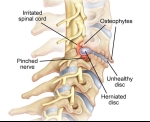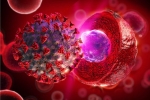Home »
Blog » Health and Wellness
| Stem Cell, PRP, Acupuncture in Queens & Long Island, New York
Health And Wellness | Stem Cell, PRP, Acupuncture in Queens & Long Island, New York
Back pain that is localized to the upper left side can be both frustrating and puzzling, especially when the cause is unknown. Depending on your health history, you may wonder if the pain is related to your spine, shoulder, ribs, or possibly an internal organ, such as the heart. Let’s look at some possible causes of upper left back pain, and when it requires a doctor visit. Muscle Strain - Upper back pain is commonly related to a muscle strain, which can feel anywhere from a dull ache to an intense or burning pain. For people experiencing mild to moderate upper left back pain with recent onset, muscle strain is by far the most common cause.
Read more
Recently, stem cell transplantation has been frequently applied to the treatment of pain as an alternative or promising approach for the treatment of severe osteoarthritis, neuropathic pain, and intractable musculoskeletal pain which does not respond to conventional medicine. Stem cell-based therapies have been realized to be a potential treatment option for articular cartilage repair in patients with knee osteoarthritis, neuropathic pain, and intervertebral disc disease.
Read more
As you may already know through personal experience, back pain can be uniquely complex and difficult to diagnose and treat. There are many types of back pain and a wide range of treatments that may or may not work for the same condition. Here we outline several insights that you may find helpful in your journey to finding and participating in a treatment approach that works for you.
Back Pain Is A Complicated, Personal Experience - The intensity and manageability of pain are very different for every person. For example, one person with a herniated disc may experience excruciating pain while another person with the same condition has no symptoms at all. Similarly, a muscle strain can range from mild to debilitating.
Read more
What Are the Benefits of CBD Cream? CBD cream can be used to treat a very specific area of your body that’s experiencing pain. If you take CBD oil for a sore muscle, you’ll get a general pain relief throughout your entire body, but the muscle pain itself may not completely disappear. On the other hand, if you apply CBD cream to your sore muscle, all of CBD’s pain-relieving effects will focus on that one area. It’s like taking an aspirin for a sore muscle versus getting a massage. With the aspirin, you get general pain relief, but the muscle may still be tight and sore. But with the massage, you can focus on the muscle until it is relaxed and pain-free.
Read more
When a doctor says you have a pinched nerve in your neck or back, it typically means that a compressed or inflamed nerve root is sending pain, tingling, numbness, and/or weakness into the arm or leg. These symptoms may be caused by a herniated disc, bone spur, or other spinal degeneration or injury. Let’s take a look at how long a pinched nerve and its related pain typically lasts.
Read more
We’re probably stating the obvious here, but the pain is a drag! Whether it’s chronic (no pun intended) or acute, pain can make your life unbearable. Up until recently, the solution for a pain that just won’t go away has been powerful opioids. These drugs often cause more problems than they’re worth. Thankfully, a new, non-addictive treatment for pain is taking the medical community by storm: CBD cream.
Read more
Most COVID‐19 patients do not develop any major clinical symptoms during the early stages of infection. Common symptoms include mild or high temperature, cough, sore throat, muscle distress, and body pain. In a few patients, shortness of breath can lead to a sudden deterioration in the health of the patient during the later stages of the disease. In severe cases, immune system dysfunction is the major cause of death in patients as infection stimulates inflammatory cytokines that result in the respiratory system being overwhelmed by a storm of inflammatory cytokines such as interleukin 2 (IL‐2), IL‐6, granulocyte colony-stimulating factor, IP10, MCP1, MIP1A, and tumor necrosis factor.
Read more
Lower back pain may occur while sitting or standing for a prolonged period. Pain may also occur when there is an active spinal movement, such as attempting to stand up and/or bend down. Lower back pain can be an intermittent discomfort or a continuous ache. Sometimes, the pain may be particularly severe when you sit down, rise from a chair, or straighten your back after bending forward. While in most cases the underlying cause of the pain can be identified, sometimes back pain may be non-specific with no identifiable cause.
Read more
The use of cannabis and medical marijuana is the most popular new scoop in various parts of the world. The benefits and favors that cannabis provide are making the people overwhelmed all over the world. Recent researches done on cannabis are taking the medical industry with a storm. However additional studies and work are still needed in the field of cannabis to unveil its qualities.
Read more
Stem cells are unspecialized cells in the body that have the potential to make more stem cells as well as differentiate into specialized cells of the body if appropriate signals are given in vitro or in vivo. Embryonic stem cells (ESCs) can be isolated from the inner cell mass of 5–8 days old embryos and possess high regenerative potential. However, the clinical use of ESCs is restricted due to a number of religious, ethical, and legal controversies. Adult stem cells can be isolated from neonatal sources (such as cord blood, cord tissue, placenta, and menstrual blood) as well as from adult tissues (such as bone marrow, adipose tissue, dental pulp, and peripheral blood) are used for these purposes.
Read more
Love this Post? Spread the World
























